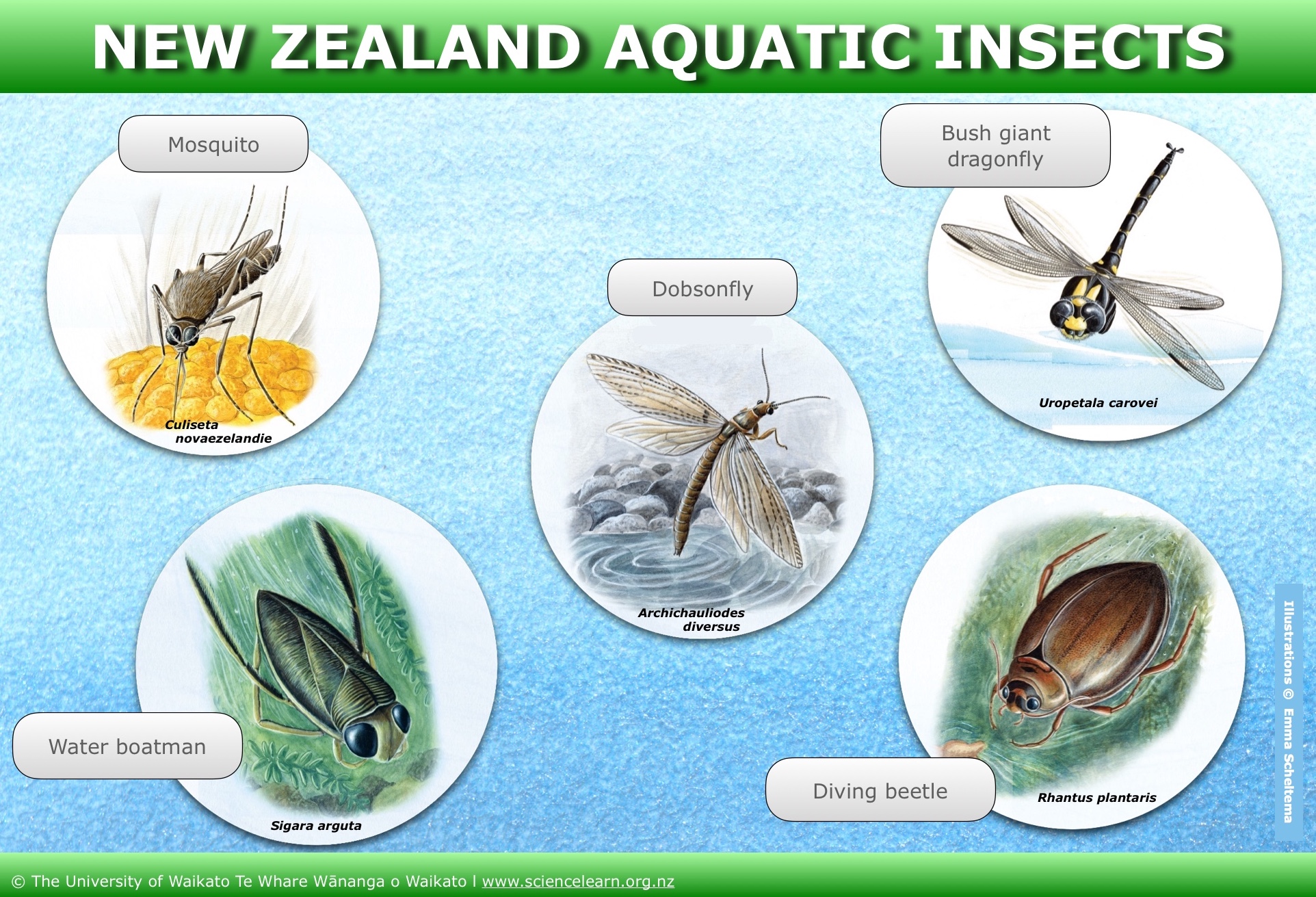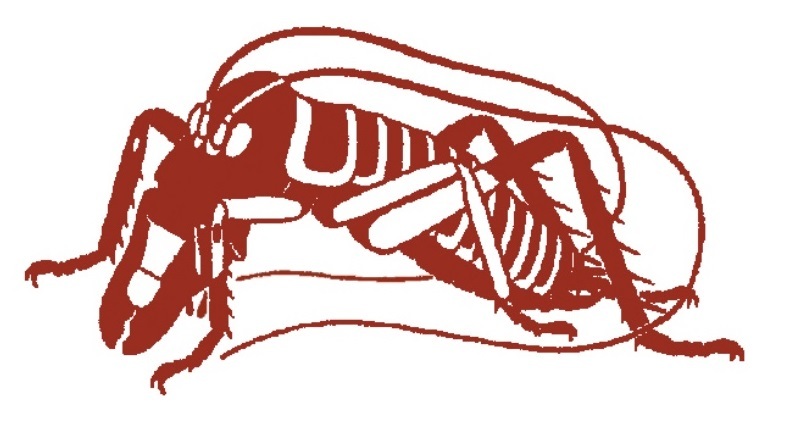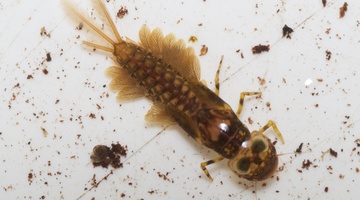Discover some of New Zealand’s aquatic insects.

Find out more about these five New Zealand insects that make water their home.
Select a label to learn more about each insect.
Transcript
Bush giant dragonfly
Uropetala carovei or kapokapowai (water snatcher) is New Zealand's largest dragonfly with a wingspan up to 130 mm, and it can be up to 86 mm long. It is relatively common and its favourite habitat is damp areas of native forests. Dragonfly larvae tunnel into soft earth by water to make their home in a chamber half-filled with water and emerge at night to seek prey near the entrance. They are long lived (estimated to be 5–6 years) and are very sensitive to disturbance so they are rarely observed. As adults, they are extremely effective aerial predators. They’re loud fliers, so you may hear one buzzing if you’re out near freshwater on a sunny day.
Image by Nick Goldwater, CC BY-NC 4.0. Sourced from iNaturalist NZ.
Mosquito
Mosquitoes are from the order of flies, Diptera, and within this they are the family Culicidae. There are over 3,400 different species worldwide, and in New Zealand, we have 13 endemic species and four introduced species. Opifex fuscus, known commonly as the saltpool mosquito or by its Māori name naeroa, is an endemic mosquito that is widespread along the coast of New Zealand.
Mosquitoes are a vector (carrier) for malaria and other diseases. They lay their eggs on the water surface, which then hatch into motile larvae that feed on aquatic algae and organic material.
Participate in the New Zealand Mosquito Census and help scientists at Te Papa learn more about the various mosquitos in Aotearoa.
Saltpool mosquitos image sourced from iNaturalistNZ, © Lek Khauv, CC BY-NC 4.0
Dobsonfly
Archichauliodes diversus is the only species of dobsonfly in New Zealand, and it is common throughout the country. You are most likely to find it in its larval form – commonly known as ‘toe biters’. The larvae are found in stony or hard-bottom streams nationwide in bush-covered or farmland areas. Its ideal habitat is large rockpools with an overhanging bush canopy that provides shelter. It thrives in good-quality water and is the largest larvae of any New Zealand freshwater insect.
The larvae are voracious predators of other aquatic invertebrates, such as mayflies and caddisflies, which they ambush and catch using their large mandibles.
Like many other insect species, an adult dobsonfly has a very short lifespan of about 6–10 days. The adult form uses its ability to fly to locate mates, and females can lay hundreds of eggs on stream banks and rocks before they die.
Images: Adult dobsonfly by Lloyd Esler, CC BY-NC 4.0 and larvae by David Wilson, CC BY-NC 4.0. Both sourced from iNaturalist NZ.
Water boatman
The water boatman (Sigara arguta) uses its long hind legs, which are fringed with long hairs, to propel itself through the water. These insects are endemic and usually found in freshwater lakes, ponds, troughs and slow-moving weed–clogged streams. Some adults have wings, so if their water source becomes overcrowded or dries out, they can fly to a new body of water. They come to the surface for air, and respiration occurs through small pores called spiracles found on the side of their bodies.
Image: Manaaki Whenua – Landcare Research, CC BY 4.0
Diving beetle
Rhantus plantari is a naturally uncommon endemic species of diving beetle in the family Dytiscidae. It was rediscovered in 1986. The Rhantus suturalis species of diving beetle is more common, found throughout New Zealand and the world.
The Rhantus plantari endemic beetle traps air under its hardened wing case (elytra), which allows it to dive under the water for longer. Diving beetles can be found in freshwater ponds, troughs and slow-moving weed-clogged streams.
Image of Rhantus suturalis copyright Zoe Quested, CC BY-NC 4.0. Sourced from iNaturalist NZ.
Related content
Download a full version of the Aquatic insect life poster from the New Zealand insect cards project.
Acknowledgement
Thank you to the New Zealand insect cards project for its support in the writing of this content.
This has been developed using resources by Dr Leilani Walker and Dr Christina Painting and illustrations by Emma Scheltema. Original material developed with support from the New Zealand Entomological Society. Search the internet to find out where to buy a set of the Insects of New Zealand playing cards.



